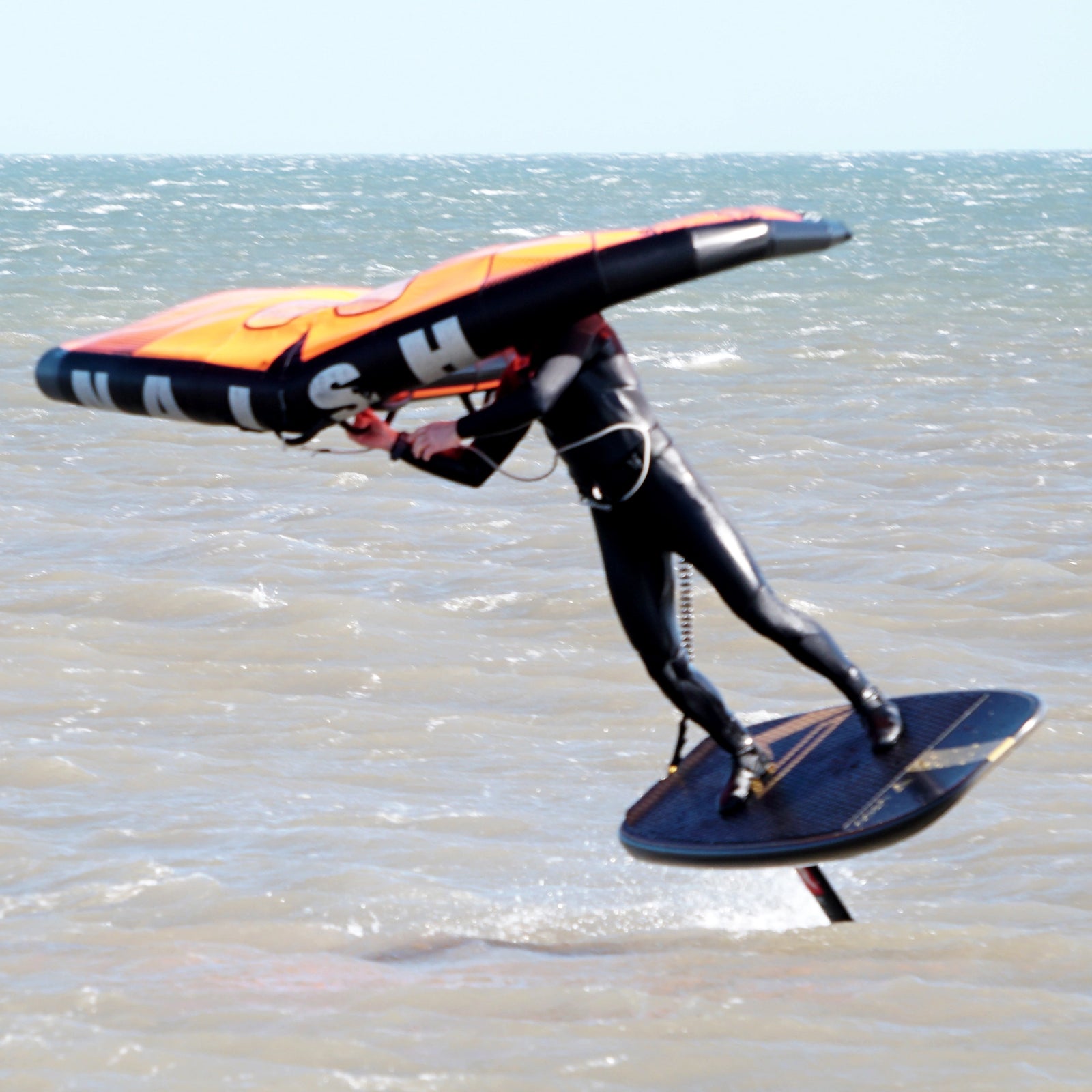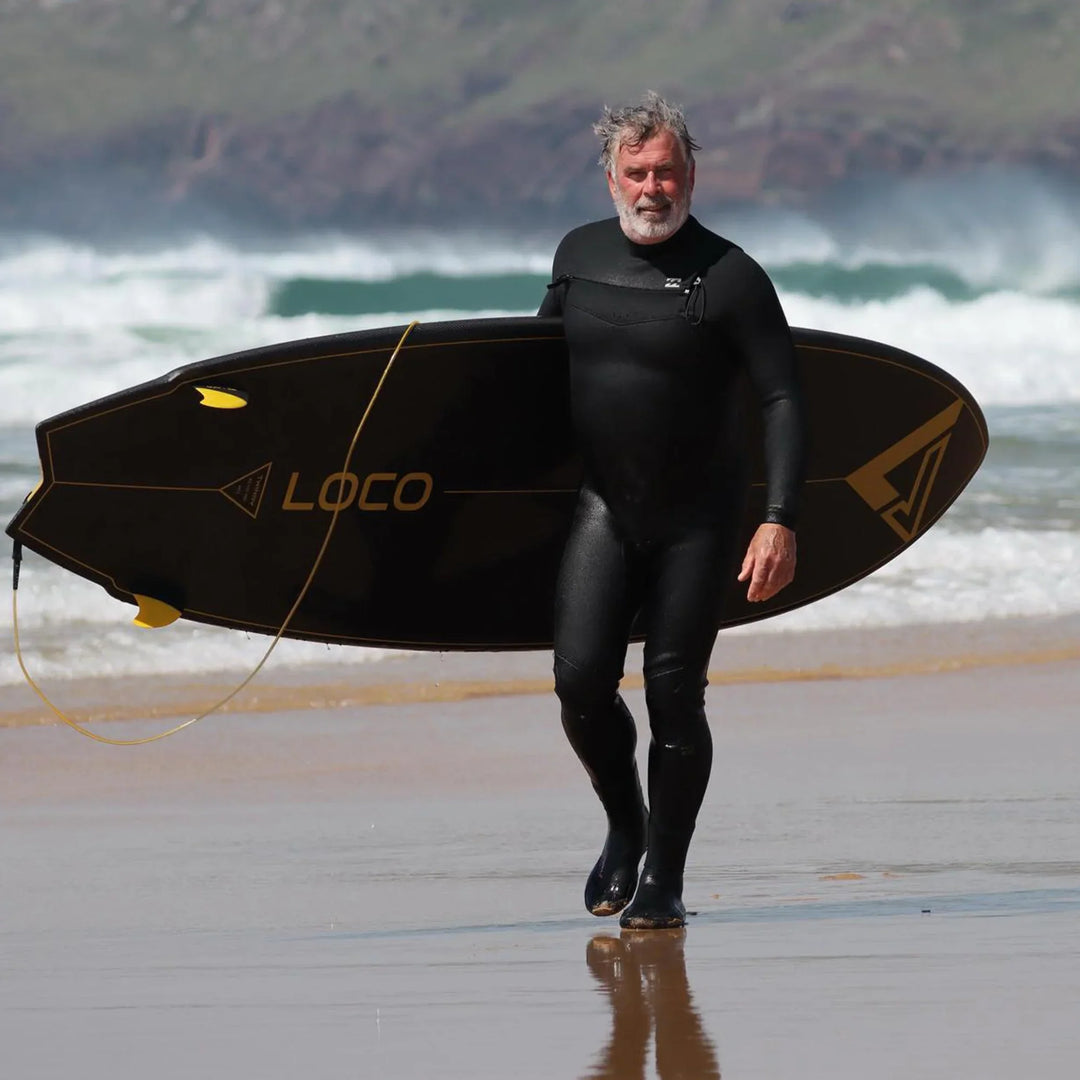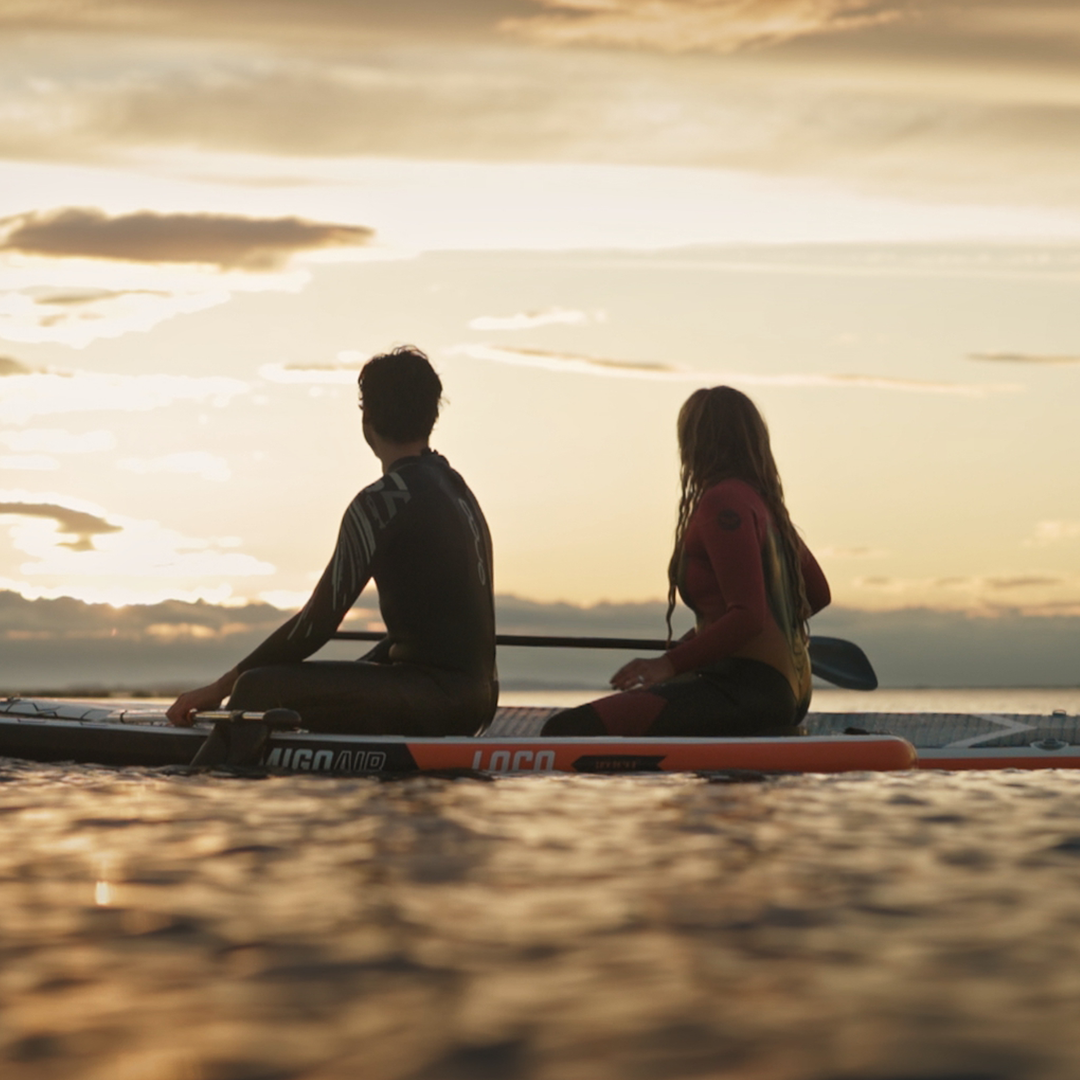Mastering the Art of the Wing Foiling: Is it Worth It?

Wing foiling has rapidly gained popularity in the water sports community. Combining the best elements of surfing, windsurfing, and kitesurfing, wing foiling offers a unique and exhilarating experience. In this comprehensive guide, we explore everything you need to know about wing foiling, from the basics to advanced techniques, and why it's the perfect sport for adventure seekers.
What is Wing Foiling?
Wing foiling, also known as wing surfing, involves riding a foil board while holding onto an inflatable wing. The wing, held in the rider's hands, harnesses the power of the wind to propel the board across the water. The foil, a hydrofoil mounted underneath the board, lifts the board above the water's surface, reducing drag and allowing for smooth, fast rides.
Essential Wing Foil Equipment
The Wing
The wing is an inflatable sail that the rider holds with both hands. It's designed to catch the wind and provide lift and propulsion. Wings come in various sizes, typically ranging from 3 to 7 square meters, depending on wind conditions and rider weight.
The Foil Board
A foil board is similar to a regular surfboard but with a hydrofoil mounted on the bottom. The hydrofoil consists of a mast, fuselage, front wing, and rear stabilizer. The foil lifts the board out of the water, allowing for a frictionless glide.
Safety Gear
Safety is paramount in wing foiling. Essential safety gear includes:
- Helmet: Protects against head injuries.
- Impact Vest: Provides buoyancy and protection.
- Leash: Keeps the board attached to the rider.
- Wetsuit: Keeps the rider warm in cold water.
Getting Started with Winging
Choosing the Right Location
Selecting the right location is crucial for beginners. Ideal conditions include:
- Flat Water: Easier for learning balance and control.
- Steady Wind: Consistent wind speeds between 10-20 knots are perfect for beginners.
- Open Space: Plenty of room to manoeuvre without obstacles.
Basic Techniques
- Standing Up on the Foil Board: Start on your knees and gradually stand up while balancing the wing.
- Holding the Wing: Hold the wing above your head, with one hand on the leading edge and the other on the handle.
- Finding Balance: Shift your weight to find balance on the foil board while controlling the wing's power.
Advanced Winging Techniques
Mastering Jibes and Tacks on the Foil Board
Mastering turns is essential for advanced foiling. Jibes and tacks allow you to change direction smoothly.
- Jibe: A downwind turn where the rider switches the wing from one hand to the other.
- Tack: An upwind turn that requires precise timing and balance.
Jumping with a Wing Foil
Jumping adds an exciting dimension to winging. To jump:
- Build Speed: Gain enough speed to create lift.
- Pop the Board: Use your legs to pop the board off the water.
- Control the Wing: Keep the wing stable to maintain balance in the air.
Riding Waves with a Foil Board
Wing foiling on waves combines the thrill of surfing with the freedom of foiling. To ride waves:
- Positioning: Position yourself in front of a breaking wave.
- Timing: Use the wing to catch the wave at the right moment.
- Foil Control: Adjust the foil's angle to ride the wave smoothly.
Benefits of Winging
Full-Body Workout with a Foil Board
Winging provides an excellent full-body workout. Balancing on the board engages your core, while controlling the wing strengthens your arms and shoulders. Riding waves and performing tricks also enhance leg strength and coordination.
Eco-Friendly Water Sport
Wing foiling is an eco-friendly water sport. It relies solely on wind power, leaving no carbon footprint. Additionally, the inflatable wings are lightweight and easy to transport, reducing the need for fuel-consuming transportation.
Accessibility of Wing Foiling
Unlike some water sports that require extensive training and expensive equipment, wing foiling is relatively accessible. With the right guidance and practice, beginners can quickly learn the basics and enjoy the thrill of foiling.
Tips for Progressing in Foiling
Building Confidence on the Foil Board
Confidence is key when learning to wing foil. Practice in safe, controlled environments before venturing into more challenging conditions. Gradually increase your time on the water to build muscle memory and improve your skills.
Joining Winging Communities
Joining a local foiling community or club can provide valuable insights and support. Experienced riders can offer tips, share experiences, and help you progress faster. Online forums and social media groups are also excellent resources for connecting with other enthusiasts.
Participating in Winging Lessons and Clinics
Professional lessons and clinics can accelerate your learning curve. Instructors can provide personalised feedback, correct mistakes, and teach advanced techniques. Many schools offer beginner courses, as well as advanced clinics for experienced riders looking to hone their skills.
Winging Competitions and Events in the UK
Local and National Foiling Events
The UK hosts numerous winging events and competitions, ranging from local meets to national championships. Participating in these events can be a great way to test your skills, meet other riders, and enjoy the camaraderie of the foiling community.
Preparing for a Wing Foiling Competition
If you're interested in competing, start by attending local events to get a feel for the competitive scene. Practice regularly, focusing on speed, agility, and advanced manoeuvres. Ensure your equipment is in top condition, and consider working with a coach to fine-tune your technique.
Environmental Impact of Wing Foiling
Sustainable Practices in Wing Foiling
As an eco-friendly sport, wing foiling has a relatively low environmental impact. To further minimise your footprint, consider the following practices:
- Use Recyclable Equipment: Opt for equipment made from recyclable materials.
- Support Eco-Friendly Brands: Purchase gear from companies committed to sustainability.
- Respect Marine Life: Avoid disturbing marine life and be mindful of protected areas.
Promoting Awareness and Conservation
Wing foilers can play a role in promoting environmental awareness and conservation. Participate in beach clean-ups, support marine conservation organisations, and educate others about the importance of protecting our oceans.
Wing Foiling vs. Traditional Water Sports
Comparing Wing Foiling to Windsurfing and Kitesurfing
While wing foiling shares similarities with windsurfing and kitesurfing, it offers unique advantages. The compact, inflatable wing is easier to transport and set up compared to a windsurfing sail or kitesurfing kite. The hydrofoil provides a smoother, faster ride with less resistance, making it a thrilling alternative to traditional water sports.
The Learning Curve of Wing Foiling
Wing foiling has a relatively steep learning curve, but with persistence and practice, most riders can achieve proficiency. Beginners may find the initial stages challenging, but the reward of gliding effortlessly above the water makes the effort worthwhile.
Conclusion
Wing foiling is an exciting and rapidly growing water sport that combines the best elements of surfing, windsurfing, and kitesurfing. With the right equipment and techniques, anyone can enjoy the thrill of riding above the water. Whether you're looking for a new adventure or a full-body workout, wing foiling offers endless possibilities for fun and excitement.
Embrace the world of wing foiling, and experience the unique blend of freedom, speed, and exhilaration that only a foil board can provide. As you progress, you'll discover a supportive community of fellow enthusiasts and a deeper connection to the natural world. So, grab your wing, hop on your foil board, and start your wing foiling journey today.
FAQs
What is wing foiling?
Winging involves riding a foil board while holding an inflatable wing, which catches the wind to propel you across the water. The hydrofoil beneath the board lifts it above the water, reducing drag and providing a smooth, fast ride.
What equipment do I need to start wing foiling?
You need a wing, a foil board, and safety gear such as a helmet, impact vest, leash, and wetsuit.
How do I choose the right wing size?
Wing sizes range from 3 to 7 square meters. Your choice depends on wind conditions and your weight; lighter riders and stronger winds require smaller wings.
What is a foil board?
A foil board is similar to a surfboard but has a hydrofoil mounted underneath. The hydrofoil includes a mast, fuselage, front wing, and rear stabilizer, which lift the board above the water for a frictionless glide.
Where are the best locations for foiling in the UK?
Ideal locations have flat water, steady wind speeds of 10-20 knots, and plenty of open space. Coastal areas and large lakes are popular spots.
Is winging difficult to learn?
Winging has a learning curve, but with practice and the right guidance, beginners can quickly learn the basics. Starting in calm, controlled environments helps build confidence.
How can I progress in foiling?
Join a local winging community, take professional lessons, and practice regularly. Participating in local events and competitions can also help improve your skills.
What are the benefits of wing foiling?
Wing foiling provides a full-body workout, is eco-friendly, and offers a unique and thrilling experience. It's accessible to beginners and offers endless opportunities for adventure.
How do I maintain my wing foiling equipment?
Rinse your gear with fresh water after each use, inspect for damage regularly, and store in a cool, dry place. Proper maintenance extends the lifespan of your equipment.
Can I wing foil in the UK during winter?
Yes, with the proper wetsuit and safety gear, you can wing foil year-round. Ensure you are well-prepared for colder conditions to stay warm and safe.




